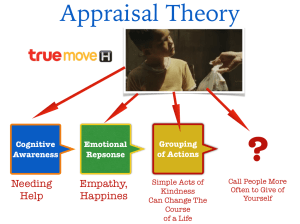 The holiday season’s best ad so far is not for a retail store and it’s not even from the United States. It’s for Spain’s famous Christmas lottery. First organized in 1812, the Loteria de Navida is the second longest running national lottery in the world. At more that 2B euros, it’s also the largest.
The holiday season’s best ad so far is not for a retail store and it’s not even from the United States. It’s for Spain’s famous Christmas lottery. First organized in 1812, the Loteria de Navida is the second longest running national lottery in the world. At more that 2B euros, it’s also the largest.
The chance of winning the giant prize, the El Gordo, is a prime motivator to buy tickets. But in recent years, the lottery has pushed the selling of multiple tickets holding the same number so more people can share in the prize. Sharing has become part of the culture. Families, offices, even neighborhood bars now buy group tickets.
This is where advertising firm Leo Burnett Madrid steps in. For the past three years it has created the Christmas Lottery ad campaign based on the idea of sharing. This year’s ad centers around a retired school teacher named Carmina who mistakenly watches a rerun of last year’s draw and thinks she’s won the prize. Rather than disappoint her, Carmina’s family plays along and creates an elaborate charade. In the end, they are the ones who are surprised.

Figure 1
The lesson of the ad is there’s no bigger prize than sharing. It’s also a lesson in the powerful use of emotion. The ad relies upon Appraisal Theory to leverage emotion to persuade the viewer to act. (Figure 1) As the viewer watches the narrative unfold they are drawn into the story based upon their own experiences of hope and anticipation. They watch as Carmina’s family cleverly perpetuates her beliefs of winning. The emotional response to Carmina’s happiness and giving away the very source of the happiness leads the viewer on a powerful journey to consider sharing tickets with their own friends and family members.
“Carmina” is just the latest Christmas Lottery creation of Leo Burnett Madrid. Last year it gave us “Justino,” the lonely night watchman at a mannequin factory who mischievously brought happiness to the co-workers he never saw. The ad won the Cannes Loins Cyber Grand Prix award.

Figure 2
The genius of both “Justino” and “Carmina” is the ads also use Means-End Model to lead the viewers on a journey of discovering higher level values. (Figure 2) In the case of Justino, those values were about the joys of giving thanks. With Carmina, it’s about the fulfillment and love that comes from making someone happy.
Sharing has become a key component of the Christmas Lottery. As a business model, the more tickets people buy to share, the bigger the prizes become. Using the power of emotion to creatively leverage the act of sharing becomes a higher-level motivator than the simple act of winning. It’s a concept the agency unveiled with its 2014 ad about “Manuel” who didn’t buy a ticket for himself.
During a holiday season that revolves around giving and sharing, the Christmas Lottery campaign has found a strategic sweet spot in the hearts of viewers. In a world-wide climate of 30 second TV spots and 10 second digital ads, Leo Burnett Madrid has bravely raised the bar with long-format creative messaging. Bring on Christmas 2017.
# # #







